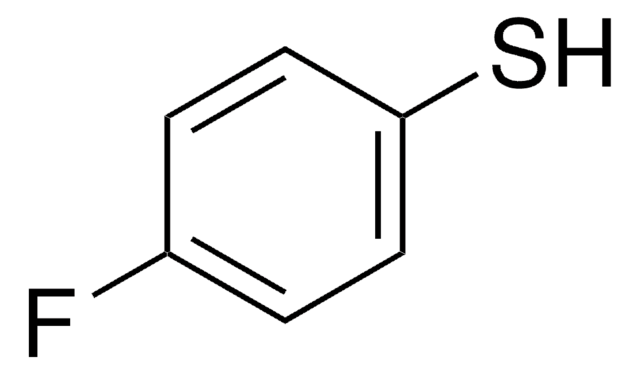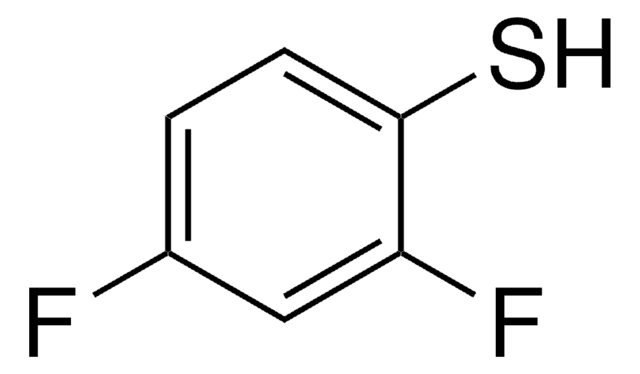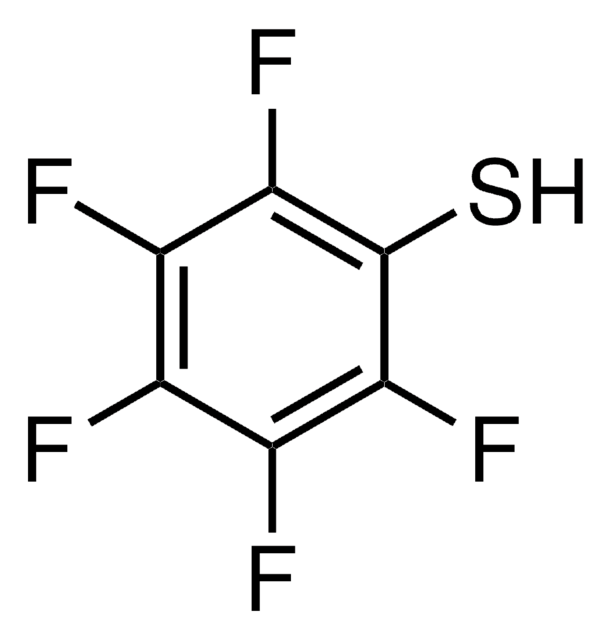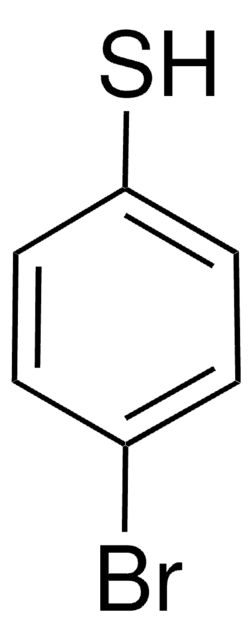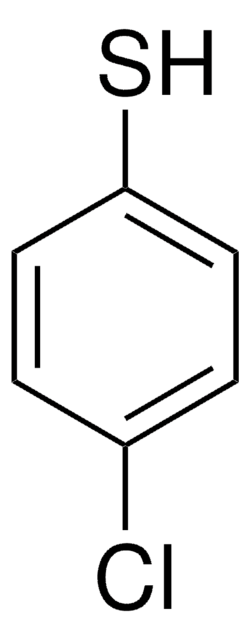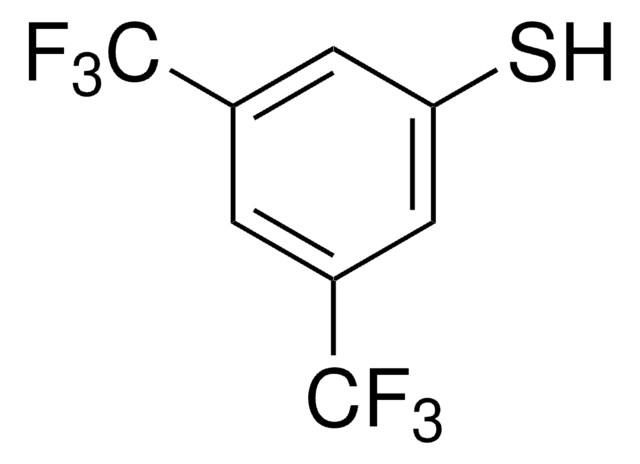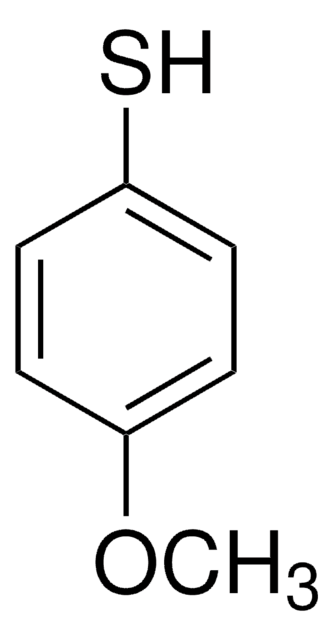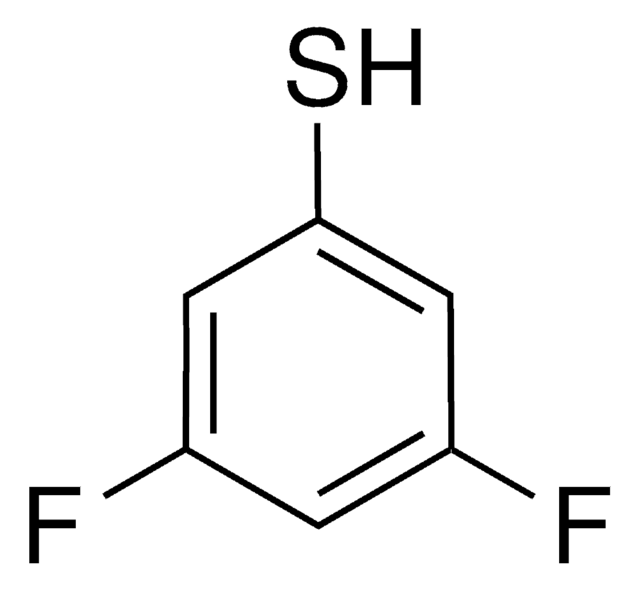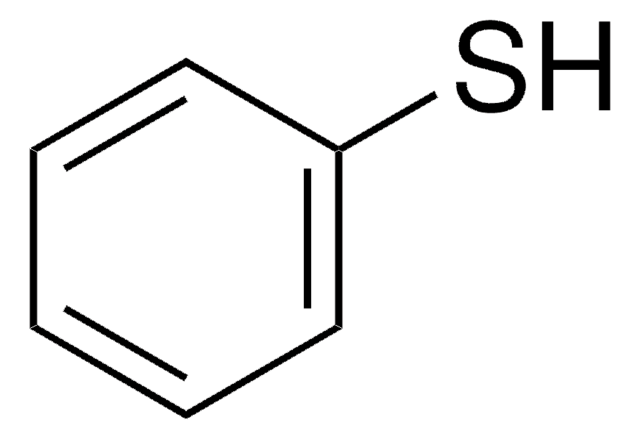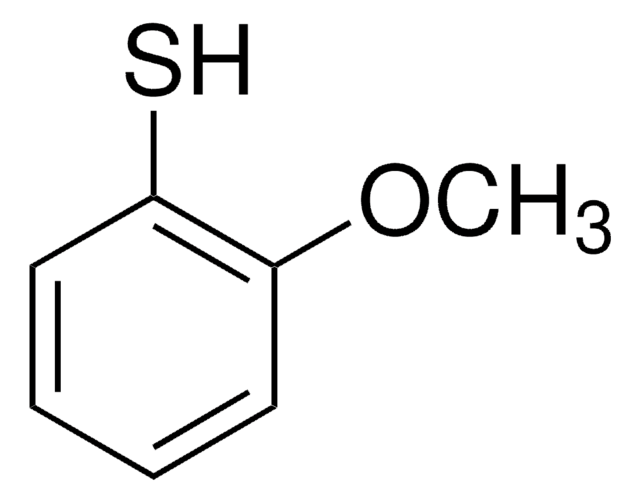275379
2-Fluorothiophenol
97%
Synonym(s):
2-Fluorobenzenethiol
Sign Into View Organizational & Contract Pricing
All Photos(1)
About This Item
Linear Formula:
FC6H4SH
CAS Number:
Molecular Weight:
128.17
MDL number:
UNSPSC Code:
12352100
PubChem Substance ID:
NACRES:
NA.22
Recommended Products
Assay
97%
refractive index
n20/D 1.557 (lit.)
bp
61-62 °C/35 mmHg (lit.)
density
1.2 g/mL at 25 °C (lit.)
storage temp.
2-8°C
SMILES string
Fc1ccccc1S
InChI
1S/C6H5FS/c7-5-3-1-2-4-6(5)8/h1-4,8H
InChI key
WJTZZPVVTSDNJJ-UHFFFAOYSA-N
Application
2-Fluorothiophenol was used in the synthesis of 2-bromo-2′-fluorodiphenyl sulfide.
Signal Word
Warning
Hazard Statements
Precautionary Statements
Hazard Classifications
Eye Irrit. 2 - Flam. Liq. 3 - Skin Irrit. 2 - STOT SE 3
Target Organs
Respiratory system
Storage Class Code
3 - Flammable liquids
WGK
WGK 3
Flash Point(F)
118.0 °F - closed cup
Flash Point(C)
47.8 °C - closed cup
Personal Protective Equipment
dust mask type N95 (US), Eyeshields, Gloves
Regulatory Information
新产品
Choose from one of the most recent versions:
Already Own This Product?
Find documentation for the products that you have recently purchased in the Document Library.
Synthesis of spiro (piperidine-4, 6'-dibenz [b, e]-1, 4-oxathiepin) and its 1-methyl derivative as potential antidepressant agents.
Collection of Czechoslovak Chemical Communications, 50(2), 503-509 (1985)
Homan Kang et al.
International journal of molecular sciences, 22(4) (2021-02-14)
We present a template-assisted method for synthesizing nanogap shell structures for biomolecular detections based on surface-enhanced Raman scattering. The interior nanogap-containing a silver shell structure, referred to as a silver nanogap shell (Ag NGS), was fabricated on silver nanoparticles (Ag
Homan Kang et al.
Scientific reports, 5, 10144-10144 (2015-05-29)
Recently, preparation and screening of compound libraries remain one of the most challenging tasks in drug discovery, biomarker detection, and biomolecular profiling processes. So far, several distinct encoding/decoding methods such as chemical encoding, graphical encoding, and optical encoding have been
Our team of scientists has experience in all areas of research including Life Science, Material Science, Chemical Synthesis, Chromatography, Analytical and many others.
Contact Technical Service